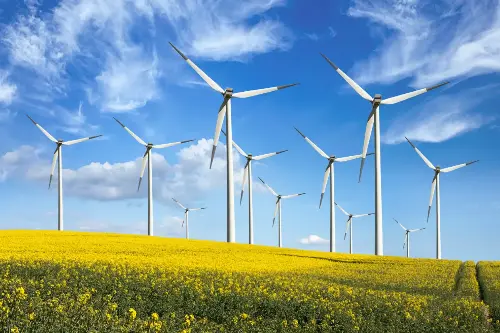Harnessing the wind as a source of energy is an ancient concept, but modern wind turbines are marvels of engineering that can convert breezes into electricity capable of powering homes, businesses, and even entire communities. As we traverse the path towards a greener future, it's worth pausing to appreciate the intricate workings of these elegant giants and their pivotal role in renewable energy.

Blade Design and Functionality
Picture the wind turbine as a towering sentinel, its blades slicing through the air. These blades are the most visible part of the turbine and are feats of aerodynamic design. Often spanning longer than a football field, the blades are shaped to capture the maximum amount of wind energy. When the wind blows, it creates a difference in air pressure on either side of the blade. The higher air pressure on one side and the lower pressure on the other create lift and drag, causing the blades to rotate. This is a manifestation of Bernoulli’s principle, which is also how airplane wings work.
How Wind Turbines Generate Electricity
At the heart of the wind turbine is the rotor, which is attached to the blades. As the rotor spins, it turns a shaft inside the nacelle – a box-like structure atop the tower. Inside the nacelle, this shaft spins a series of gears that increase the rotation speed, converting the relatively slow turning of the blades into the high-speed rotation required by the generator to produce electricity.
The Role of the Generator
The generator, then, is where the magic of transformation occurs; it converts mechanical energy into electrical energy through electromagnetic induction. As the rotor turns, it spins magnets around coils of wire, which generates alternating current (AC) electricity. This energy needs to flow at a consistent frequency to be compatible with the grid, which is where power electronics come into play, ensuring a smooth integration.
Intelligent Control Systems
One might not immediately think of wind turbines having a “brain,” but indeed, they do. Modern turbines are equipped with a sophisticated control system that monitors everything from wind speed and direction to electricity production. This intelligent system can adjust the pitch of the blades – their angle in relation to the wind – for optimal efficiency and to protect the turbine from damage in high winds. The turbine can also be yawed, or turned on its axis, to face the wind directly, maximizing potential energy capture.
Optimal Placement of Wind Turbines
In terms of placement, not all locations are equal for wind turbines. They thrive in terrains where the wind is strong and consistent. That's why you'll often find wind farms on hilltops, in open plains, or offshore where the lack of obstructions means the wind can travel faster. Offshore wind turbines are particularly advantageous, benefiting from stronger, more consistent winds, but the marine environment introduces additional challenges from saltwater corrosion to complex installation logistics.
Environmental Considerations
Considering the environmental aspect, wind turbines tick many green boxes. They produce no greenhouse gases during operation and the land around them can often still be used for farming or as natural habitats. However, it’s important to note that while they are a cleaner energy source, wind turbines do have an environmental footprint. Their construction requires materials such as steel and concrete, and their blades – at the end of their lifespan – present a recycling conundrum due to their complex composite materials.
Technological Advances
The interplay between the scale of turbine production and technological advances is constantly evolving, aimed at reducing costs and improving efficiency. For instance, turbines are getting taller to capture more wind, and their blades are being designed with innovative materials to lengthen their service life. There is also a marked push towards finding sustainable solutions for blade disposal and recycling to address end-of-life environmental concerns.
Integrating Wind Energy into the Grid
Moreover, as we advance our quest for green energy sources, the integration of wind energy into the grid becomes critical. Grid management technologies and energy storage solutions, like batteries or pumped hydro storage, help mitigate the variability of wind energy, fitting it into the ebb and flow of daily power demands.
In summary, wind turbines are a towering testament to human ingenuity in the quest for sustainable energy. Their intricate design, coupled with cutting-edge technology, positions them as a formidable force in the fight against climate change. As we witness these winds of change, it becomes apparent that our journey toward cleaner, renewable energy is as much about innovation as it is about the age-old dream of harnessing the elements. Wind turbines, with their spinning blades and towering frames, are not just structures on the landscape; they are dynamic symbols of our progressive leap toward a greener, more resilient world.
